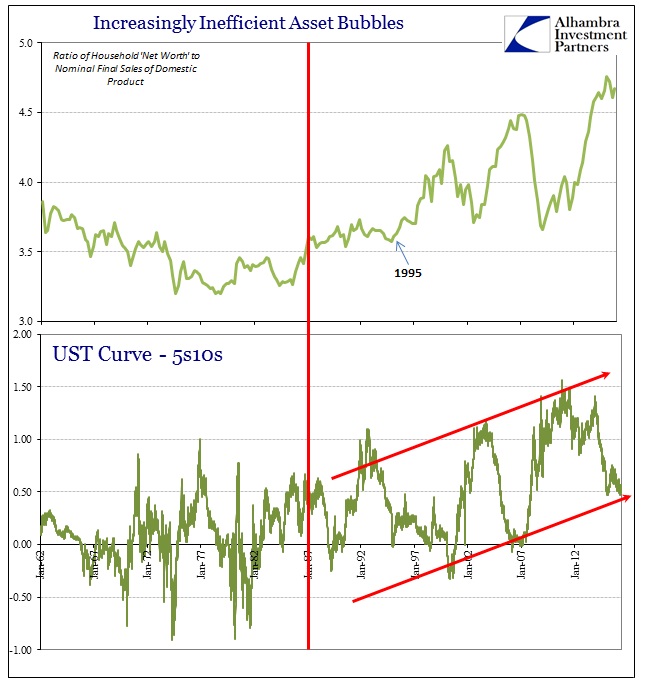Jeff Snider wrote a fascinating post yesterday on the yield curve and its usefulness as an economic indicator. Many have suggested recently that we won’t see a recession without first seeing the yield curve invert. Jeff contradicts this idea by suggesting that, due to increasingly aggressive monetary policy over the past several decades, its the relative change in the yield curve not the absolute change that should be measured in this regard:
In past cycles an inverted curve has appeared months before the onset of recession, so the fact that there is still positive spread in the calendar maturities is being taken as if credit is suggesting still some hope for avoiding it… The incidence of the steeper yield curve is itself a reflection of monetary degradation. The FOMC targeted lower and lower rates for the front end which UST bill rates “obliged.” The back end of the curve was relatively apathetic, which had the effect of steepening the curve far beyond the historical range. While a steeper curve is supposed to reflect better long run economic prospects, that was never the case. Instead, that numerically sharper curve only suggested the increasing inefficiency of monetary policy… So the narrow focus on the +95 bps spread remaining in the 2s10s part of the curve misses the economic slowing and drastic risks that the prior 150 bps of already completed flattening has been proved right about. It is not the absolute level of the curve that has been useful in determining the slowdown condition (or the appearance of slowdown itself) but rather the relative changes and flattening all throughout this “cycle.”
Looking at the chart at the top of this post, it’s pretty clear we have now reached the effective “lower bound” for the yield curve. If he’s right, this is a pretty clear recessionary warning. And if that chart looks familiar, that’s because even long-time Fed insiders are now speaking out about the massive distortion of asset prices Jeff refers to that has been a direct result of super-aggressive monetary policy.

